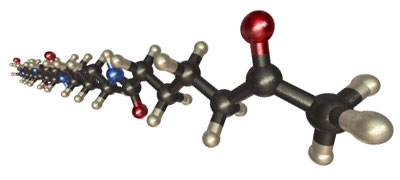 I just finished a post on using Mixture Design of Experiments to accelerate the development of complex formulated mixtures such as adhesive, composites, coatings, etc. This made me think of a nice example of how one chemist totally engaged in the process and developed a killer product that blew away the competition and enabled the customer to save millions of dollars and win some awards. Nice.
I just finished a post on using Mixture Design of Experiments to accelerate the development of complex formulated mixtures such as adhesive, composites, coatings, etc. This made me think of a nice example of how one chemist totally engaged in the process and developed a killer product that blew away the competition and enabled the customer to save millions of dollars and win some awards. Nice.
We started Design for Six Sigma (DFSS) training with all of our formulation chemists. When I looked around the room I could identify those that would embrace it immediately, those who would totally struggle, and those “on the fence.” As the class evolved, one of my really bright chemists sat quietly in the class, asked good questions, but I thought he was one of those that would conclude “this is not for me.” At some point in the class, and I think it was during the large section of DOE training that the light bulb went off. He didn’t telegraph this, but went back to his lab and started using the tools. And did he use the tools!
We were competing with a major competitor to be the first to develop a new product platform for a huge multi-national customer. The stakes were high. Not to worry since my “quiet chemist” was working formulation magic using a combination of factorial DOE’s and mixture DOE’s to develop a cutting edge new product. He first started with his deep knowledge of the polymer chemistry required to meet the customer requirements and did some initial formulation work to establish the curing process and final properties with base chemistry (remember our discussion on product architectures? The base chemistry was one of the key components of the product architecture he was building). Once he got the curing and final properties in the right range, he needed to add fillers (another component of the product architecture).
He used a series of factorial DOE’s to optimize the application process (totally new way to use this particular product) and then used mixture designs (including response surfaces) to fine tune the formulation. Once he quickly got a working product we sampled the customer to get early feedback. After each customer trial he used statistical designs to further optimize the product. Along the way a couple things happened. He discovered some unexpected results from the mixture DOE’s resulting in a better formulation that met customer requirements. The project required developing both a formulation and application process and using the statistical toolbox, he found some unexpected process/formulation interactions as well. Interactions will kill you.
To make a long story short, we trounced our competitor, got qualified into a series of new products, and the entirely new product and process allowed the customer to save significant costs. The project won an internal innovation award at the customer and our formulation project team lead by my “quiet chemist” won an innovation award as well.
The cat was out of the bag. He wasn’t my “quiet chemist” any more and was a strong advocate for leveraging DFSS to optimize formulations, reduce development time, and develop a robust new products that customers love.
So what’s the bottom line? In R&D, variation is good. Unlike in manufacturing where variation is the enemy, when you get unexpected results (more variation) then using statistical tools like factorial designs and mixture designs allows you to exploit variation as an opportunity to learn. Statistical designs don’t replace the chemistry and physics skills formulators need, but give them a very powerful toolset to leverage chemistry for the customer’s benefit. Good stuff…

Leave a Reply